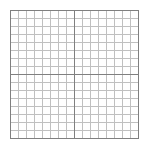Adam7 algorithm

Adam7 is the interlacing algorithm specified for use in PNG images. An interlaced PNG image is broken into seven subimages, which are defined by replicating this 8×8 pattern across the full image.
1 6 4 6 2 6 4 6 7 7 7 7 7 7 7 7 5 6 5 6 5 6 5 6 7 7 7 7 7 7 7 7 3 6 4 6 3 6 4 6 7 7 7 7 7 7 7 7 5 6 5 6 5 6 5 6 7 7 7 7 7 7 7 7 |
The subimages are then stored in the PNG file in numerical order.
Adam7 uses seven passes and operates in both dimensions, compared to only four passes in the vertical dimension used by GIF. This means the whole image can be perceived much more quickly in the early passes, particularly if interpolation algorithms such as bicubic interpolation are used.[1]
Adam7 is named after Adam M. Costello, who suggested the method on January 30, 1995, based on this five-pass scheme that had earlier been proposed by Lee Daniel Crocker:
1 4 2 4 5 5 5 5 3 4 3 4 5 5 5 5 |
Related algorithms
Adam7 is a multiscale model of the data, similar to a discrete wavelet transform with Haar wavelets, though it starts from an 8×8 block, and downsamples the image, rather than decimating (low-pass filtering, then downsampling). It thus offers worse frequency behavior, showing artifacts (pixelation) at the early stages, in return for simpler implementation.
